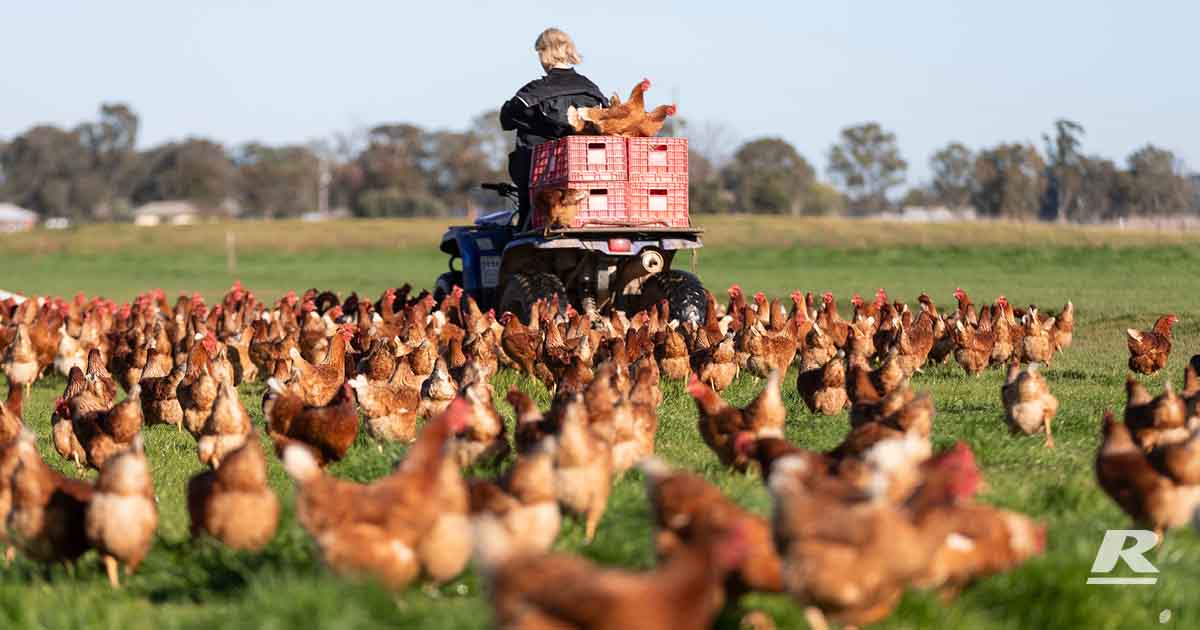Pullet Feeding is Critical for Laying Hens
Good quality pullet chicks are essential for sustained and profitable layer production. Pullet growers should aim for optimum body weight and confirmation by ensuring that all aspects of rearing management are of the highest standard possible. Low egg numbers and poor eggshell quality can often be traced back to problems occurring in the growing period.
Nutrition during growth of pullets must be carefully monitored as any checks in growth or abnormal development due to poor nutritional intake is unlikely to be corrected after egg production starts.
Checking to ensure there is uniformity of growth rate in the flock by regularly measuring pullet body weight will improve precision feeding of flocks and reduce feed wastage. With flock feeding, there is a risk that low body weight pullets will be under-fed or normal weight pullets overfed. A good body weight uniformity to aim for should be at least 85% (that is 85% of the individual bird weights are +/- 10% of the average weight of the flock). A lower percentage than 85% will result in low peak production rates and substandard egg production, pullets may start laying at different times and underweight hens may lay small eggs. To overcome these problems, more expensive nutrient-rich formulations may have to be fed to the whole flock but could lead to obesity in normal weight hens.
Layer pullets that meet or exceed body weight targets for the flock during each development stage have a better chance of reaching their genetic potential for egg-laying. If normal development phases during growth are interrupted hens will lack body reserves and proper organ functions needed to maintain high production rates.
Three Main Physiological Stages of Pullet Development
Stage 1 – Day-old to 6 weeks of age
- The digestive tract and the immune system are developing faster than muscle and bone. Stress, subclinical disease or poor-quality feed can permanently damage the efficient digestion and the absorption of feed nutrients. If development of the immune system is reduced there will be in increased susceptibility to disease and decreased immunity following routine inoculations.
- Pullet starter diets for this stage are formulated to give ideal nutrition to fast growing pullets that need to develop organs for the digestive and immune systems. They are high in energy (12.3–12.4 MJ/kg), protein (18 to 20%) and balanced vitamins and minerals required for growth and development.
Stage 2 – 7 to 12 weeks of age
- During this period muscles, bones and feathers develop at a faster rate than in Stage 1. Growth that determines adult body size and muscle weight occurs here and poor management an feeding will lead to insufficient bone and muscle reserves needed for long-term maintenance of high egg-production rates and good eggshell quality. The skeleton is 95% developed by the end of the 12 weeks and any further increases in bone size do not significantly affect production rates.
- The amount of mineral reserve available for eggshell formation is directly related to the hen’s skeleton size. Stressful management practices can delay body size development during this stage and may also result in reduced immune function causing pullets to be more susceptible to diseases and less responsive to inoculations.
- During this period, pullet grower feed is used in place of the pullet chick starter. Pullets should now be fully feathered so energy requirements are reduced. Grower rations have lower energy (11.9–12.0 MJ/kg) and protein levels and than chick rations. P concentration is important as inadequate P intake during the first half of pullet rearing results in an increased incidence of osteoporosis in mature hens.
- Feeding management for growers or pullets aims to maintain a growth rate that leads to pullets reaching sexual maturity at the desired age and weight for the strain and avoids obesity.
Stage 3 – After 12 weeks
- Rate of increases in body size and weight slows during this stage and the rate of reproductive tract development increases as it until it reaches maturity and is ready for egg production. The rate of muscle growth slows whereas rate of proliferation of fat cells increases. Because of this if body weight gain during this stage is too rapid, pullets develop over large fat deposition that can cause complications to rates of egg production. On the other hand, if body weights are low during this period or if pullets suffer stress during this stage delay in the onset of egg production can occur.
- The pullet grower feed is replaced with pullet developer feed which prepares pullets for egg production. Pullets are now able to increase voluntary feed intake and a low energy density diet encourages this and has the two-fold effect of reducing the incidence of overweight birds and increasing gut-holding capacity and stimulating gizzard activity.
- A Pre-Lay ration with increased level of calcium is recommended for feeding for 10 days before the start of egg-laying. At this time the medullary bone within the cavities of long bones (a special type of tissue that can rapidly accumulate and rapidly release calcium) can be increased by feeding calcium-rich rations. Pre-Lay diet is not ideal if fed earlier than 15 weeks of age or later than first egg as it contains insufficient calcium to support egg production.
PLEASE NOTE: The numbers presented in this article are a guide only, and does not take into consideration external factors and individual scenarios. Please refer to the official guideline’s for each breed, as provided by your breeder / supply company, or consult with our nutritionist.
Talk to your local Reid’s Poultry Specialist today for further information on feeding replacement layer pullets on 1300 REID FEED or enquire here >
 Author
Author
Johnny Barwary
PhD in poultry nutrition and physiology
Reid’s monogastric manager

 Author
Author